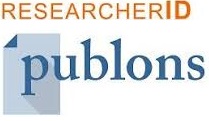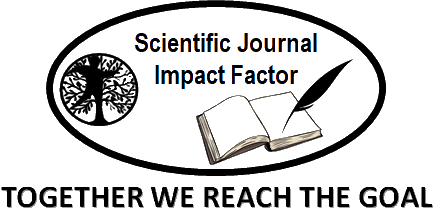Impact of Financial Cooperatives on the Livelihood of smallholder Farmers in Rulindo district. Case of UMITE SACCO, Period 2019-2023
Abstract
Keywords
Full Text:
PDFReferences
National Institute of Statistics Rwanda, “MAIN INDICATORS: 5th Rwanda Population and Housing Census (PHC).” Accessed: Sep. 07, 2024. [Online]. Available: https://www.statistics.gov.rw/publication/main_indicators_2022
FAO, “Smallholders and Family Farmers.” Accessed: Sep. 07, 2024. [Online]. Available: https://www.fao.org/family-farming/detail/en/c/273864/
National Institute of Statistics of Rwanda, “SEASONAL AGRICULTURAL SURVEY,” National Institute of Statistics of Rwanda, SEASON A 2023, 2023. [Online]. Available: https://www.statistics.gov.rw/publication/1930
Farm to Market Allieance, “Rwanda – Farm to Market Alliance,” Farm to Market Allieance, 2022. Accessed: Sep. 08, 2024. [Online]. Available: https://ftma.org/rwanda/
V. Kiaya, “POST-HARVEST LOSSES AND STRATEGIES TO REDUCE THEM,” 2014.
S. Nair Ajai,Ono,Toshiaki,Mapfumo,Shadreck,Gakombe,Brice,Mpambara,Aimee Marie Ange,Allen,Jeffrey, “Rwanda Agriculture Finance Diagnostic,” World Bank. Accessed: Sep. 13, 2024. [Online]. Available: https://documents.worldbank.org/en/publication/documents-reports/documentdetail/536681536640330399/Rwanda-Agriculture-Finance-Diagnostic
C. Bizimana, “Population pressure and farm fragmentation: Challenges facing agriculture in Rwanda,” Rwanda Journal, vol. 17, pp. 82–105, 2009.
REMA, “Rwanda State of Environment and outlook report.” Accessed: Sep. 09, 2024. [Online]. Available: https://www.rema.gov.rw/soe/chap3.php
ARCOS, “ARCOS Establishes Terraces to Fight Erosion and Improve Agriculture in Western Rwanda,” ARCOS Network. Accessed: Sep. 08, 2024. [Online]. Available: https://arcosnetwork.org/?p=13356
M. M. Guja, “The Role of Financial Institutions in Smallholder Agriculture Development:Ethiopian Context,” EJBM, vol. 14, Jan. 2022, doi: 10.7176/EJBM/14-1-03.
“IPAR-RWANDA| AFR, 2018.” Accessed: Sep. 08, 2024. [Online]. Available: https://afr.rw/wp-content/uploads/2021/04/rwanda_agriculture_finance_year_book__first_edition_english_version_final_31.7.2019-compressed.pdf
P. Mugenzi, G. Owour, and H. K. Bett, “What Constrains Smallholder Farmers Decisions to Participate and use Agricultural Value Chain Financing in Rwanda? The Case of Smallholder Potato Farmers in Musanze and Nyabihu Districts,” vol. 5, no. 1, 2022, [Online]. Available: www.ijtsrd.com
A. Wudad, S. Naser, and L. Lameso, “The impact of improved road networks on marketing of vegetables and households’ income in Dedo district, Oromia regional state, Ethiopia,” Heliyon, vol. 7, no. 10, p. e08173, Oct. 2021, doi: 10.1016/j.heliyon.2021.e08173.
K. E. Karlson et al., “Rwanda Agriculture Finance Diagnostic,” R I Med J (1974), vol. 58, no. 11, pp. 465–478, Sep. 2018.
World Bank, “Rwanda Feeder Roads Impact Evaluation : Road Monitoring Dashboard,” World Bank. Accessed: Sep. 11, 2024. [Online]. Available: https://documents.worldbank.org/en/publication/documents-reports/documentdetail/099072324112512236/P144873189c63c01b1976b1253f22574337
FAO, S. Pavanello, P. Pozarny, Ana Paula De la O Campos, and N. Warring, “Research on Rural Women’s Economic Empowerment and Social Protection: The Impacts of Rwanda’s Vision 2020 Umurenge Programme (VUP),” social protection, 2016, [Online]. Available: https://openknowledge.fao.org/server/api/core/bitstreams/40d04a37-8791-4a82-90c6-8dea2d992ef9/content
Rwanda Agriculture and Animal Resources Development Board, “Single Project Implementation Unit.” Accessed: Sep. 11, 2024. [Online]. Available: https://www.rab.gov.rw/1-1/single-project-implementation-unit
M. Berna, J. Y. Lee, and S. H. Lee, “Impact of Saving and Credit Cooperatives (SACCOs) on the Income of Smallholder Farmers in Rwanda: A Case Study of Busasamana Sector,” Journal of Agricultural, Life and Environmental Sciences, vol. 32, no. 3, pp. 239–254, Oct. 2020, doi: 10.22698/jales.20200020.
T. Diop and F. Ibrahim, “Increasing Meaningful Financial Inclusion in Rwanda:Community-Based Savings and Credit Co-operative Societies,” 2023.
N. P. Kumburu and V. Pande, “Rural Transformation Through Savings and Credit Cooperative Societies in Moshi District, Tanzania,” in The Palgrave Handbook of Agricultural and Rural Development in Africa, E. S. Osabuohien, Ed., Cham: Springer International Publishing, 2020, pp. 313–338. doi: 10.1007/978-3-030-41513-6_15.
International Monetary Fund, “Microfinance Institutions and Public Policy,” vol. 2002, no. 159, Sep. 2002, Accessed: Sep. 12, 2024. [Online]. Available: https://www.elibrary.imf.org/view/journals/001/2002/159/article-A001-en.xml
H. Eustache and D. R. Claude, “Financial Inclusion Strategies and Performance of SACCOs in Rwanda; A Case Study of Umurenge SACCOs in Rusizi District”.
S. R. Ntuite, “The contribution of saving and credit cooperatives (SACCOS) on the improvement of members‘ socio economic development in Rwanda: Opportunities and challenges,” Jan. 2022, Accessed: Sep. 14, 2024. [Online]. Available: https://kola.opus.hbz-nrw.de/frontdoor/index/index/year/2022/docId/2274
V. Habamenshi and N. Ernest, “The Impact of Computerized Systems on Efficiency and Productivity of Cooperatives in Rwanda. A Case Study of Cooperative Management System (CMS) Software Developed by MNK Digital Group Ltd,” vol. VIII, no. IV, May 2024, doi: https://dx.doi.org/10.47772/IJRISS.2024.804295.
DOI: http://dx.doi.org/10.52155/ijpsat.v47.2.6595
Refbacks
- There are currently no refbacks.
Copyright (c) 2024 Emmanuel NDORUHIRWE

This work is licensed under a Creative Commons Attribution 4.0 International License.



















